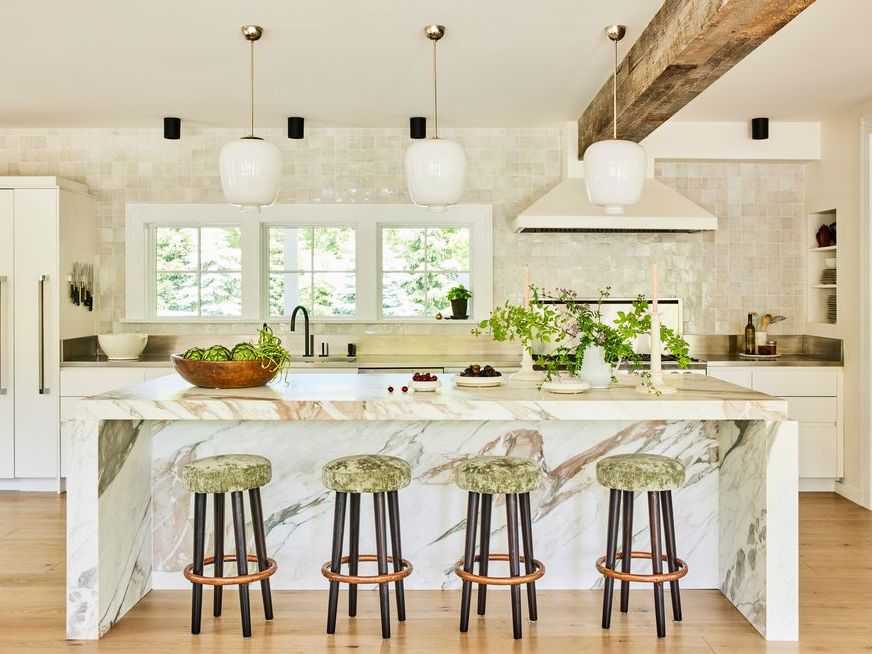A Comprehensive Overview to Putting Up and Preserving Your Pendant Light
Installing and preserving a pendant light calls for mindful preparation and implementation. Correct height measurements can enhance both functionality and design. Vital devices and a clear setup process are vital for an effective configuration. Routine maintenance assurances longevity and performance. Understanding these elements can transform a room. Nonetheless, recognizing where to begin could appear daunting. What steps should one prioritize to achieve the best outcomes?
Recognizing Necklace Light Styles
While numerous property owners seek to boost their rooms with pendant lighting, recognizing the numerous styles available is essential for making an enlightened option. Pendant lights come in a plethora of styles, each offering distinct visual and practical benefits. Typical necklace lights frequently include traditional shapes and products, such as glass or metal, providing a classic charm. Contemporary layouts, on the various other hand, may integrate ingenious products and bold shades to create striking centerpieces.
Industrial-style pendants usually use raw products like exposed light bulbs and rustic finishes, appropriate for lofts and contemporary setups. For a more wayward touch, vintage-inspired options evoke fond memories with intricate information and retro coatings. Additionally, minimal layouts concentrate on simpleness and tidy lines, appealing to those that prefer downplayed style. Understanding these diverse designs permits homeowners to choose necklace lights that not only matches their decoration yet likewise offers their sensible lighting needs successfully.
Gauging the Perfect Height for Your Pendant Light
Exactly how does one establish the perfect height for a pendant light? To achieve the most effective capability and visual allure, numerous factors must be thought about. Normally, a necklace light need to hang 30 to 36 inches over a table to assure enough lighting without blocking sights. Precede with high ceilings, the component might be placed a little greater to preserve proportionality.
For kitchen area islands, a height of 28 to 34 inches above the countertop is typically recommended, allowing for adequate light insurance coverage while keeping a welcoming environment. In living areas, the pendant should be hung at an elevation that enhances the bordering style and does not produce a risk for individuals strolling under it.
Eventually, individual preference and room measurements play considerable functions in identifying the perfect elevation. Checking various elevations prior to final installment might help attain the preferred effect and capability.
Tools and Materials Needed for Installment
Successful installment of pendant lights requires a certain set of devices and materials to assure a smooth process. Important devices include a screwdriver, cord stripper, and a drill, which promote safe component accessory and proper electrical wiring. A voltage tester is crucial for validating safety and security by ensuring that power is off prior to beginning any kind of electrical job.
In enhancement to tools, particular products are necessary for setup. These consist of the pendant lighting fixture itself, electric wiring, cable nuts for safe and secure connections, and installing equipment. A ceiling hook may likewise be called for, depending on the fixture's style.
For included safety and comfort, a ladder will certainly aid in reaching high ceilings, while a level assures that the light hangs equally. Preparing these tools and materials ahead of time improves the setup procedure, making it extra efficient and reliable. Correct prep work is important to accomplishing an effective necklace light installment.
Step-by-Step Installment Refine
With the needed tools and products gathered, the installation process for pendant lights can begin. First, the power supply ought to be switched off at the circuit breaker to ensure security. Next off, the installing brace needs to be connected to the electrical box in the ceiling. After securing it, the electrical contractor's tape ought to be used to cover any exposed wires.
Following that, the necklace light's cables are linked to the matching wires in the ceiling: black to black (or red), white to white, and eco-friendly or copper for ground. Once the connections are made, they should be protected with cable nuts.
The pendant light can after that be affixed to the installing bracket, making particular it hangs at the wanted height. The light bulb is put, and the power is transformed back on at the circuit breaker, allowing the brand-new pendant light to illuminate the room.
Preserving and Cleaning Your Necklace Light
What steps should be required to ensure the longevity and visual appeal of necklace lights? Routine upkeep and cleaning are important in maintaining their appeal and functionality. Dirt and dirt can gather on pendant lights, diminishing their sparkle. To clean, a soft, lint-free towel or microfiber towel ought to be made use of, together with a mild cleaner suitable for the surface area material - Pendant Light. For glass or crystal pendants, a glass cleanser can enhance clearness without touches
It is a good idea to transform off the light and allow it to cool down prior to cleaning. Furthermore, inspecting the fixture for loosened light bulbs or connections regularly assures security and optimal performance. Transforming bulbs regularly stops pressure on electrical components if suitable. Ultimately, keeping a safe environment by preventing direct exposure to dampness can greatly prolong the life of pendant illumination. Following these steps will keep pendant lights looking their best while functioning effectively.
Troubleshooting Common Pendant Light Issues
When pendant lights breakdown, numerous usual concerns might develop, consisting of flickering light bulbs, inaccurate setup, and voltage changes. Determining the origin is important for reliable fixing and guaranteeing peak efficiency. Resolving these troubles immediately can improve the longevity and functionality of necklace illumination fixtures.
Flickering Light Bulbs
Flickering light bulbs can be a resource of stress for house owners, commonly indicating underlying electrical concerns or basic maintenance demands. This sensation may originate from loose bulb links, where the bulb is not firmly matched the socket, creating intermittent call (Pendant Light). Furthermore, defective or website link aging light bulbs may flicker my review here as they near completion of their life expectancy. An additional typical reason is inconsistent voltage, which can arise from problems within the electrical system or overwhelming circuits. Homeowners must also look for damaged electrical wiring, as this can lead to flickering and present safety and security dangers. Prompt replacements and regular assessments are vital to assure proper performance and to preserve a secure home setting. Recognizing the origin quickly can protect against further difficulties

Incorrect Installment Problems
Incorrect installation of necklace lights can cause a series of concerns that might resemble those brought on by flickering light bulbs. Common troubles include loose circuitry connections, which can interfere with the flow of electrical power and lead to periodic lighting. In addition, if the mounting brace is not securely secured, the pendant might hang unevenly, producing an unstable component that can cause vibrations or sound. Inaccurate light bulb types or power level can also contribute to efficiency problems, as inappropriate bulbs might not operate effectively in the component. Poor spacing from the ceiling can create shadows or minimize light circulation, decreasing the designated result of the pendant light. Identifying and resolving these installation errors is necessary for achieving proper performance and visual allure.
Voltage Variation Problems
Although pendant lights can improve an area's setting, voltage fluctuations can result in considerable performance problems. These fluctuations may cause flickering lights, decreased brightness, or even premature bulb failure. To diagnose such problems, one should first check the lighting fixture's compatibility with the voltage supply. Using a multimeter can help measure voltage degrees and recognize abnormalities. It might be needed to check the electrical system for loose links or malfunctioning electrical wiring if voltage problems persist. Sometimes, consulting a licensed electrical expert is suggested to ensure you could try these out security and conformity with neighborhood codes. Appropriately dealing with voltage fluctuations not just improves the efficiency of pendant lights but additionally prolongs their lifespan and boosts general lights top quality.
Enhancing Your Space With Necklace Light Placement
Effective pendant light positioning can significantly enhance an area by adhering to suitable height standards, guaranteeing the appropriate illumination degree. Layering these lights with other resources can create a balanced ambience, highlighting focal points within the area. Accomplishing an unified look needs mindful consideration of both the component's positioning and its connection with bordering elements.
Ideal Elevation Standards
When considering the excellent height for pendant lights, a basic standard suggests hanging them around 30 to 36 inches over a countertop or table surface. This elevation permits maximum illumination while making sure that the light does not block sights or create dangers. In eating locations, necklace lights should be positioned to improve the eating experience, typically around 28 to 34 inches above the table. For kitchen area islands, preserving harmony throughout numerous pendants can develop a cohesive look; spacing them evenly and adhering to the suggested elevation improves capability. It is necessary to take into account ceiling height also, as higher ceilings may need modifications to preserve proportionality and visual charm. Appropriate height placement significantly adds to the general atmosphere of an area.
Layering With Other Lights
As pendant lights are integrated into a broader lighting layout, they can substantially boost the ambience of an area. Their adaptability enables them to be layered with ambient, task, and accent lighting, developing an unified equilibrium. For example, combining pendant lights with recessed lighting can give basic illumination while highlighting particular areas. Job illumination, such as under-cabinet lights, can match necklaces in cooking areas, making sure functionality without giving up design. Accent lights, like wall surface sconces, can further improve the atmosphere, accentuating artwork or building functions. By strategically placing these light sources, home owners can accomplish deepness and dimension, changing an average space right into a magnificently illuminated establishing that accommodates different activities and moods.
Prime Focus and Balance

Tactically put pendant lights can function as enchanting centerpieces within a room, drawing the eye and boosting the total visual. When choosing pendant lights, it is vital to take right into account their dimension, shape, and color to assure they enhance the existing style. A strong, large pendant can develop a striking centerpiece over an eating table, while smaller components may function much better in clusters to attain a balanced look. Furthermore, positioning necklace lights at varying elevations can add deepness and aesthetic interest to the room. Preserving equilibrium with other components, such as furniture and wall surface colors, will certainly make sure that the pendant lights improve the room without frustrating it. Thoughtful placement changes the ambiance, producing an unified and inviting ambience.
Often Asked Inquiries
Can I Install a Necklace Light in a Recessed Ceiling?
The question of whether a necklace light can be mounted in a recessed ceiling typically arises. Normally, it is feasible with suitable placing hardware, making sure correct support and electric links for safe and efficient installation.
What Kind of Light Bulb Is Best for Pendant Lighting?
When picking light bulbs for pendant lights, LED options are often liked as a result of their energy performance and long life. Additionally, the color temperature level need to match the desired atmosphere, with cozy white being a preferred selection for cozy settings.
Are Pendant Lights Safe for Outdoor Usage?

Exactly how Do I Pick the Right Pendant Light Power Level?
Picking the best necklace light electrical power includes reviewing the space's size, wanted brightness, and fixture compatibility. Normally, lower power levels match ambient lights, while higher power levels supply job lighting, guaranteeing capability and visual appeal.
Can I Utilize a Dimmer Change With My Necklace Light?
The concern emerged whether a dimmer button can be utilized with a pendant light. Typically, if the lighting fixture and light bulb work, a dimmer button can properly enhance ambiance and control brightness levels.
When pendant lights malfunction, numerous usual issues might arise, consisting of flickering light bulbs, incorrect installation, and voltage fluctuations. Improper installment of necklace lights can lead to an array of concerns that might look like those triggered by flickering bulbs. Insufficient spacing from the ceiling can produce shadows or reduce light distribution, diminishing the desired result of the necklace light. Efficient pendant light placement can substantially boost an area by adhering to optimal height standards, making certain the ideal illumination level. When picking light bulbs for pendant lights, LED options are often favored due to their power efficiency and longevity.